Pediatric Experience Design
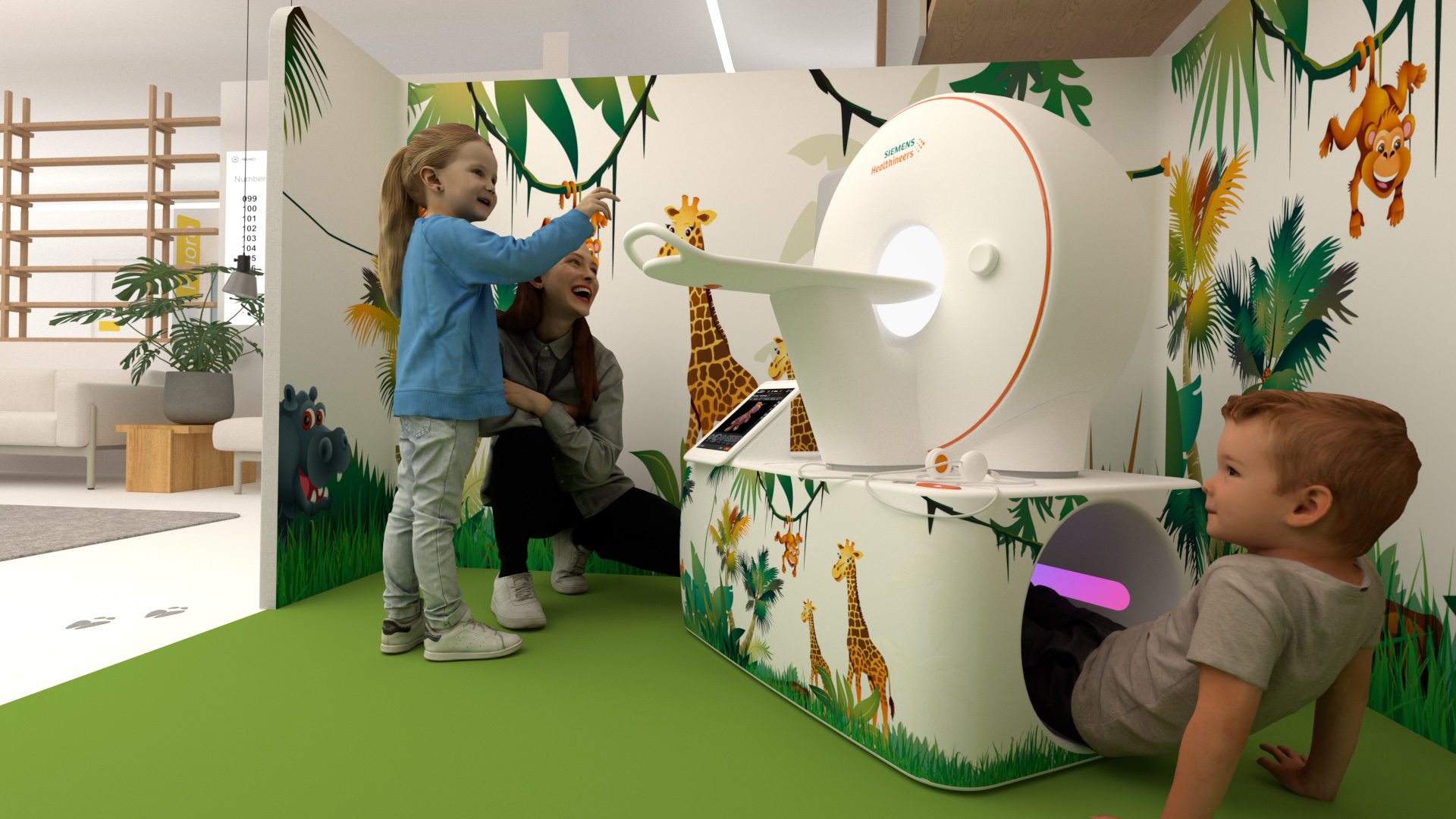
Siemens Healthineers
Young patients often experience anxiety during MRI scans, leading to movement, poor image quality, and prolonged sedation. Reducing this anxiety is crucial for improving medical processes and enhancing the overall patient experience, which can lead to better recovery rates and financial benefits for hospitals.
This project aimed to enhance the paediatric experiences for all involved stakeholders through a human-centered design approach and evidence-based design principles. Based on extensive research we developed a storytelling framework to ease the MRI process for young patients, reducing sedation times and improving image quality while enhancing the reputation of Siemens Healthineers’ medical devices as a preferred choice for patients and hospitals.
Strategy
- Grounded in human-centered and evidence-based design principles.
- Focused on understanding the emotional and psychological needs of young patients undergoing MRI exams.
- Defined clear goals and created a strategic roadmap in collaboration with key stakeholders.
Research
- Conducted quantitative and qualitative research in order to understand target groups
- Organized workshops with stakeholders, including patients, parents and medical staff
- Used creative activities (e.g. LEGO-building) to be able to connect with children and getting to know their needs, ultimately informing design decisions, e.g. the role of storytelling in medical procedures.
Concept
- Developed narratives based on our research to transform the MRI process into a familiar experience.
- Crafted the character of "Gerda the Giraffe," who helps children visualize the MRI process in a jungle-themed story.
- Created physical booklets and interactive VR-experiences, to engage children with the narrative.
- Conducted iterative user testing and feedback sessions to refine the concept.
Realization
- Designed a booklet to be sent to children’s homes, introducing Gerda’s story prior to hospital visits.
- Developed VR games for in-hospital use, allowing children to navigate Gerda's MRI experience.
- Created spatial environments within the hospital to immerse children in the story and reduce the clinical atmosphere.
Outcome
The project significantly impacted hospitals and patients by reducing anxiety through storytelling, achieving a 66% decrease in sedation times for children during MRI exams, reported by clinical staff. This improvement led to better image quality and more efficient medical processes, enhancing the emotional and psychological well-being of young patients who felt less fearful and more prepared.
As a result, recovery rates increased, and families reported greater trust and loyalty toward their healthcare providers. The approach not only reduced sedation-related costs but also strengthened the hospitals' reputations as patient-focused institutions, offering a competitive advantage.
Furthermore, this success in using storytelling as an anxiety-reducing tool opened new opportunities for innovations in patient experience, aligning with the broader strategy of enhancing healthcare environments for all ages.
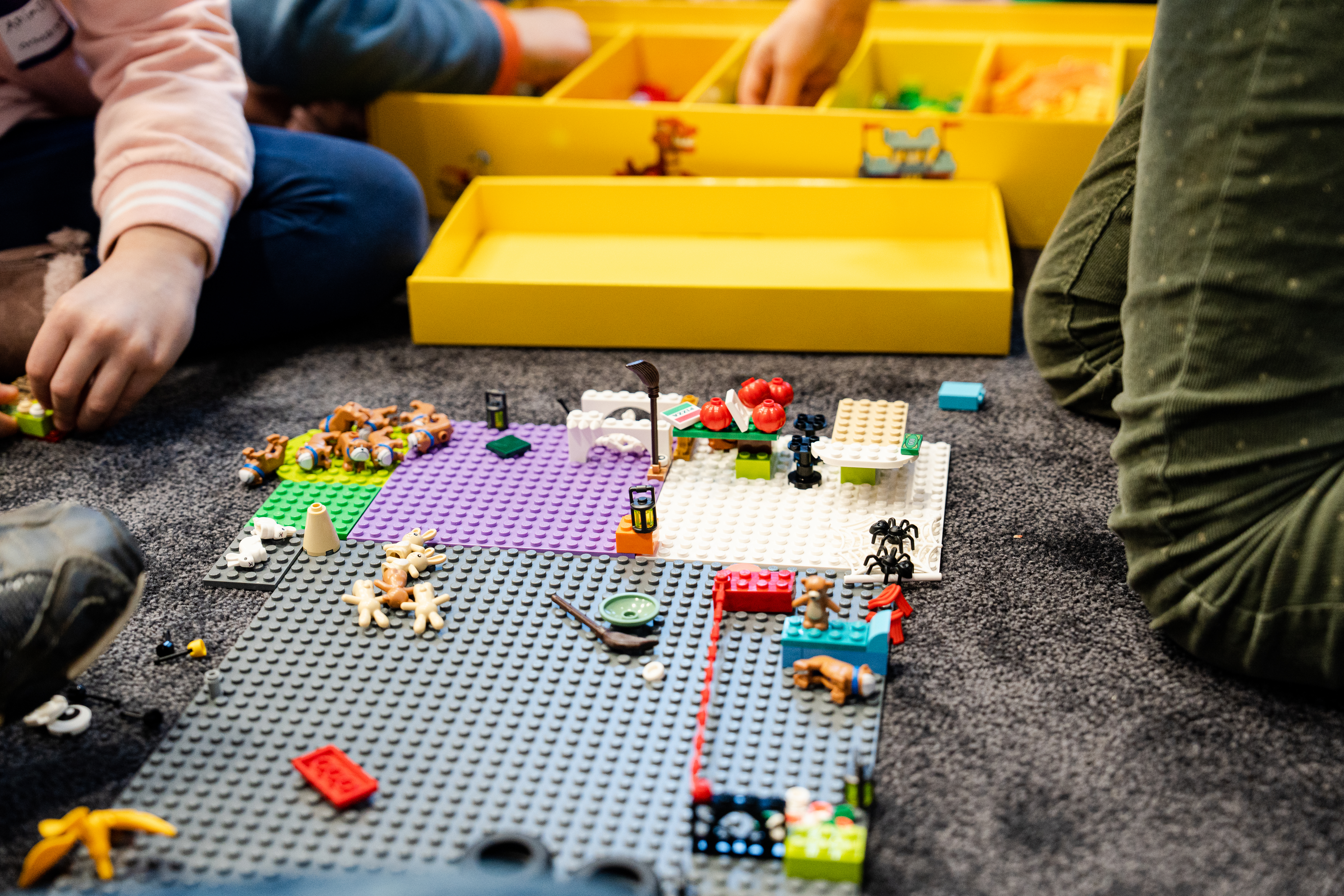
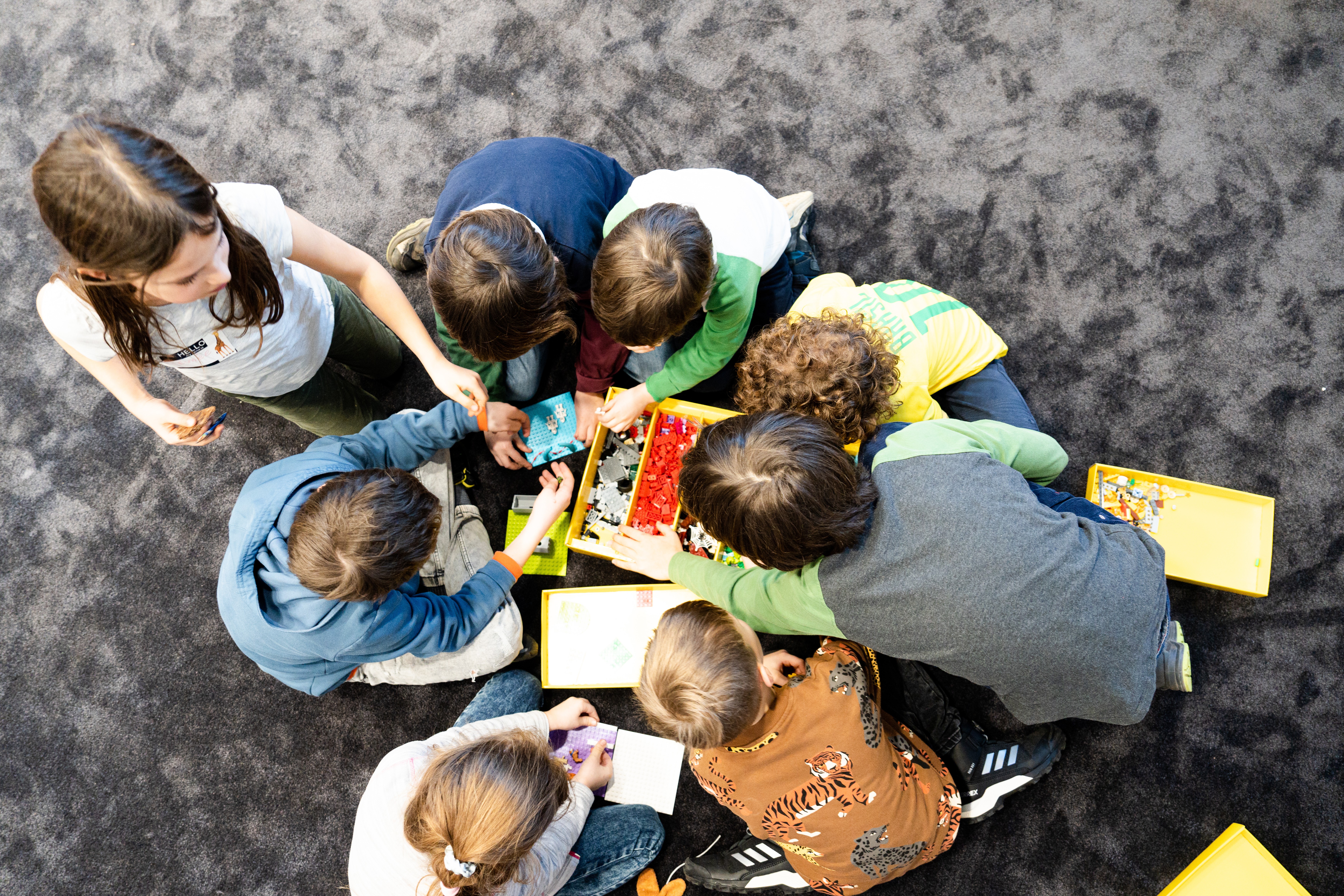
When designing for children, it is crucial to understand the needs of all stakeholders. A key challenge is that children may struggle to verbally express complex emotions. To address this, we designed workshops using LEGO as a communication tool, allowing children to express their needs in a more intuitive way.
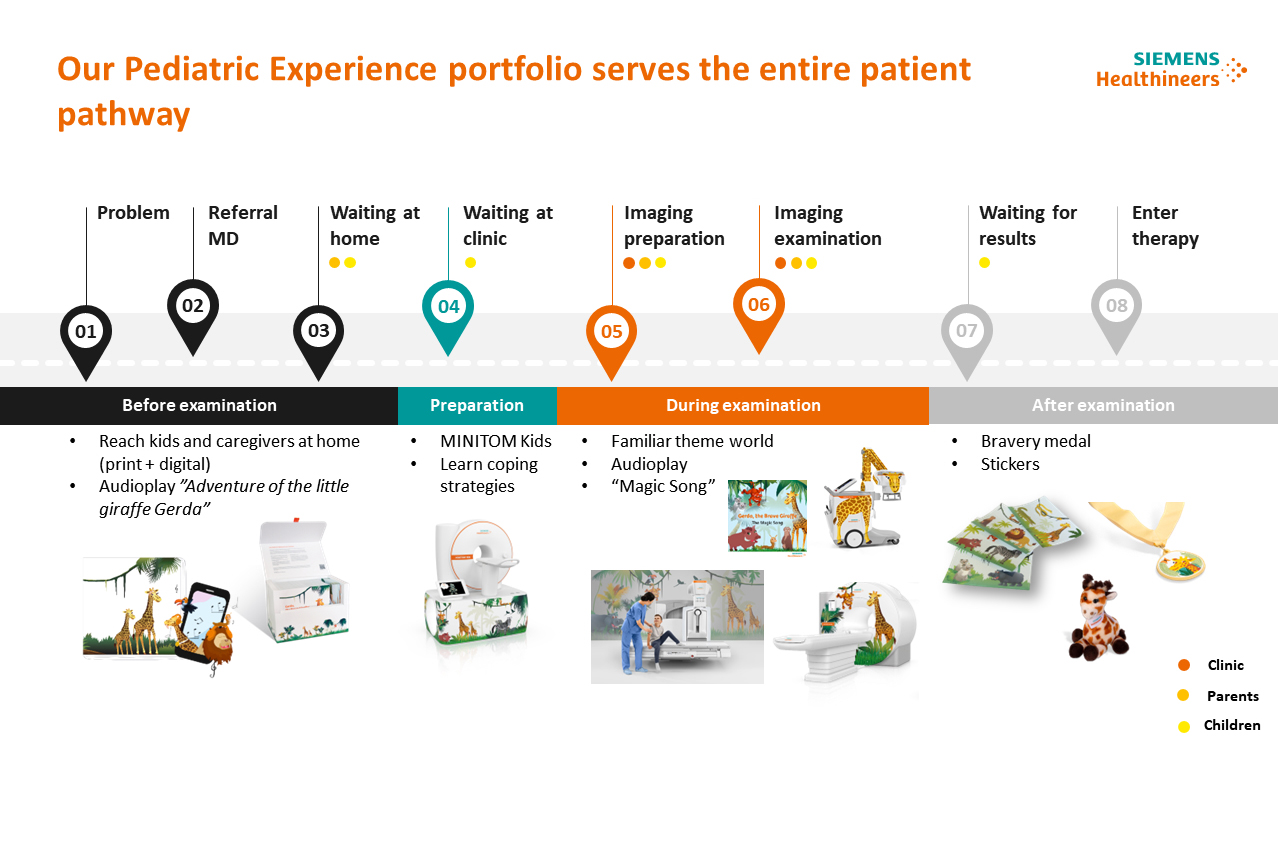
Mapping out the pediatric patient journey was essential to identifying where design solutions would be most effective.
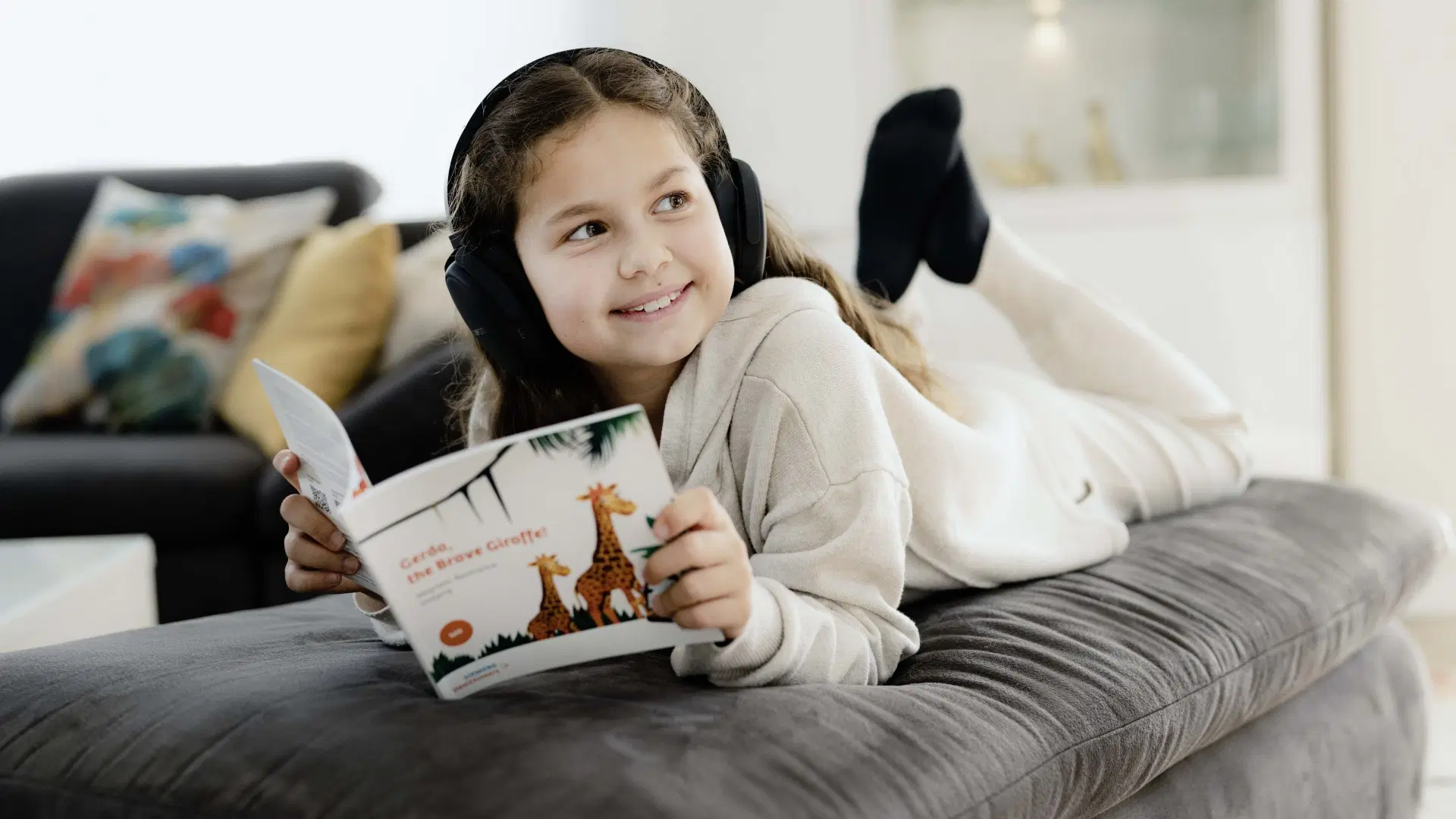
To create a holistic approach, we aimed to introduce design solutions before children even enter the hospital. This allows them to spend time with their parents preparing for procedures and becoming familiar with the experience in a comfortable environment.
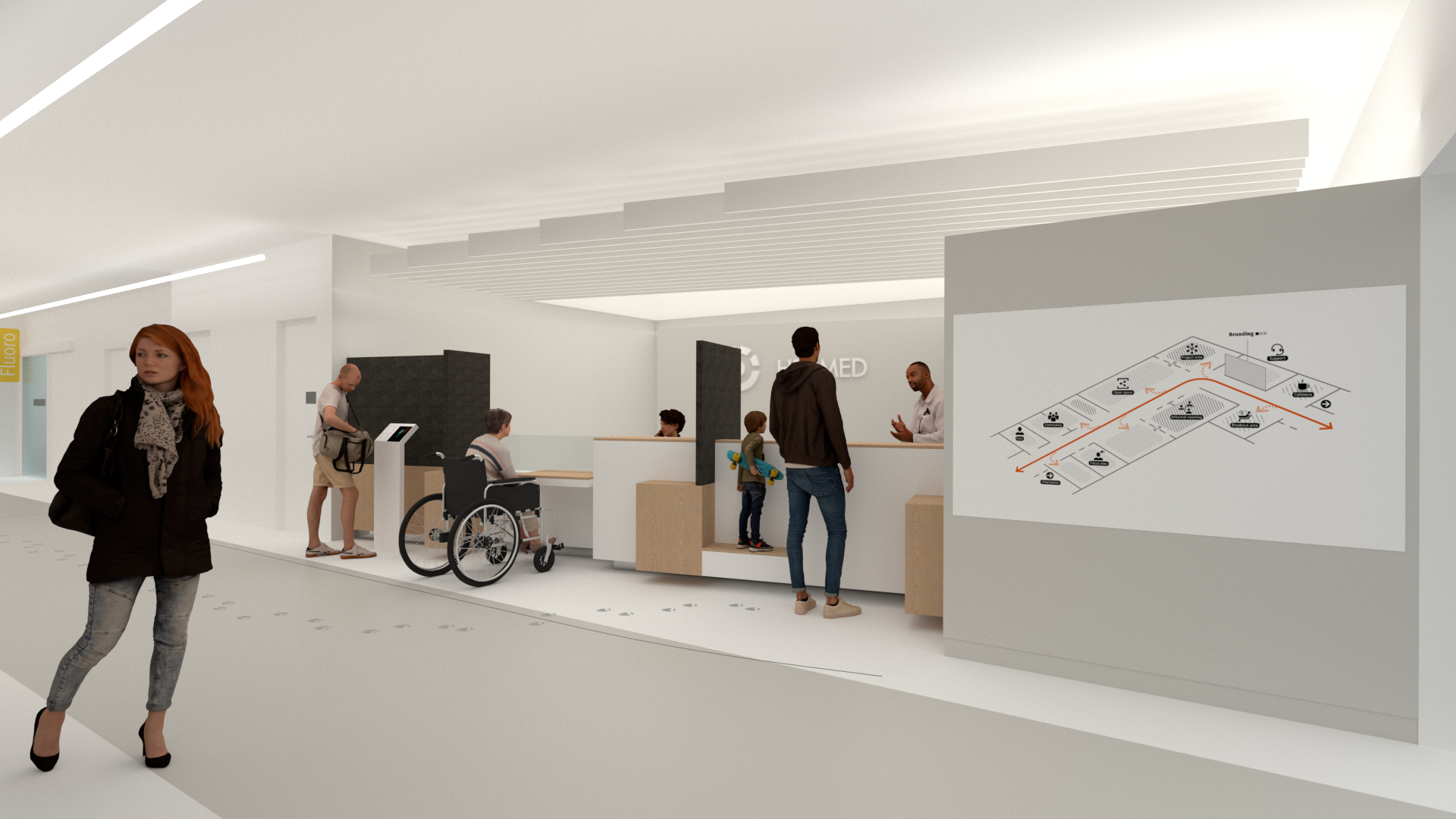
Children are actively included in their hospital journey. A dedicated step at the reception desk empowers them as protagonists of their own experience. Giraffe-shaped footprints serve as a wayfinding system, enhancing the immersive environment.
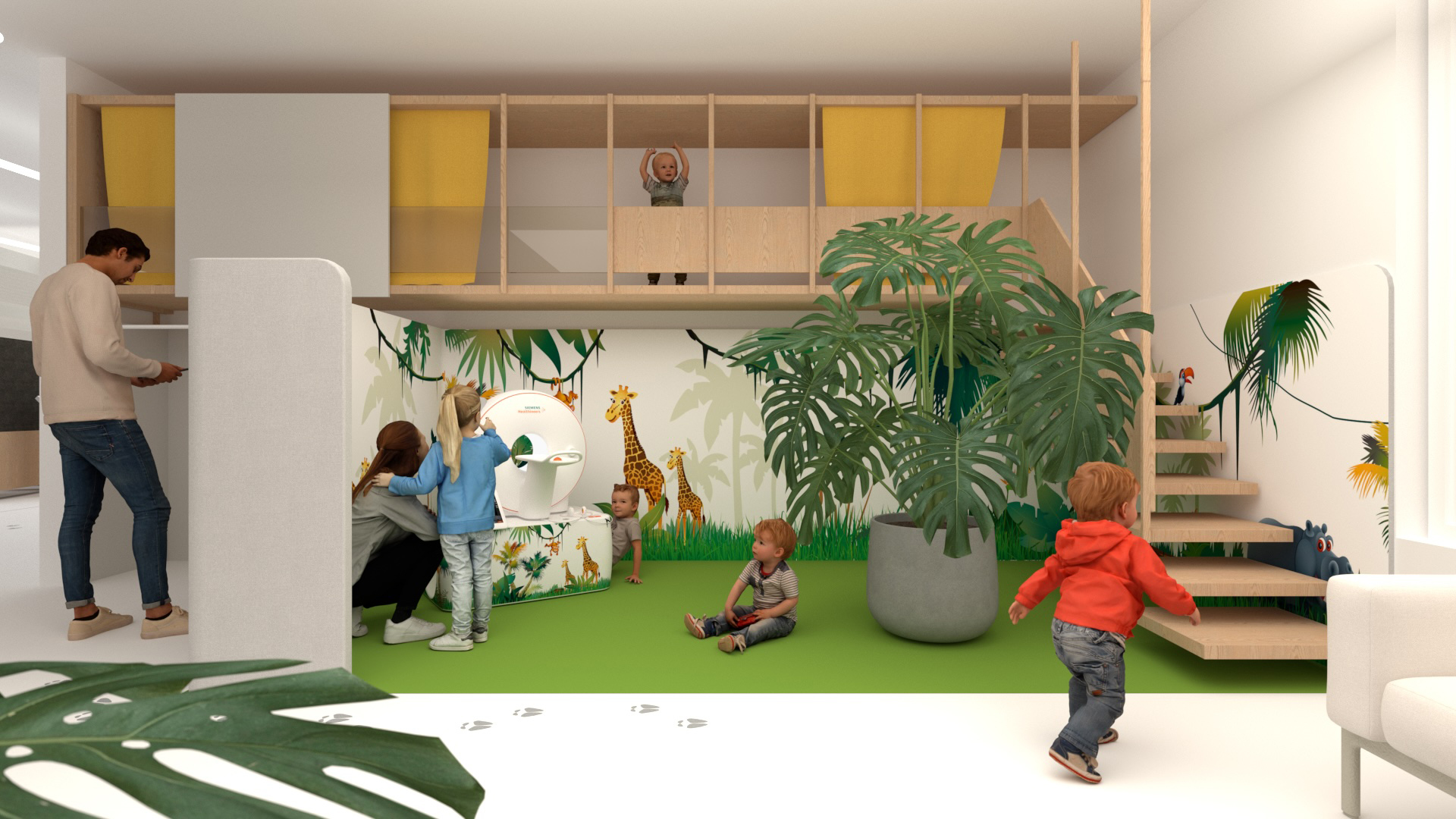
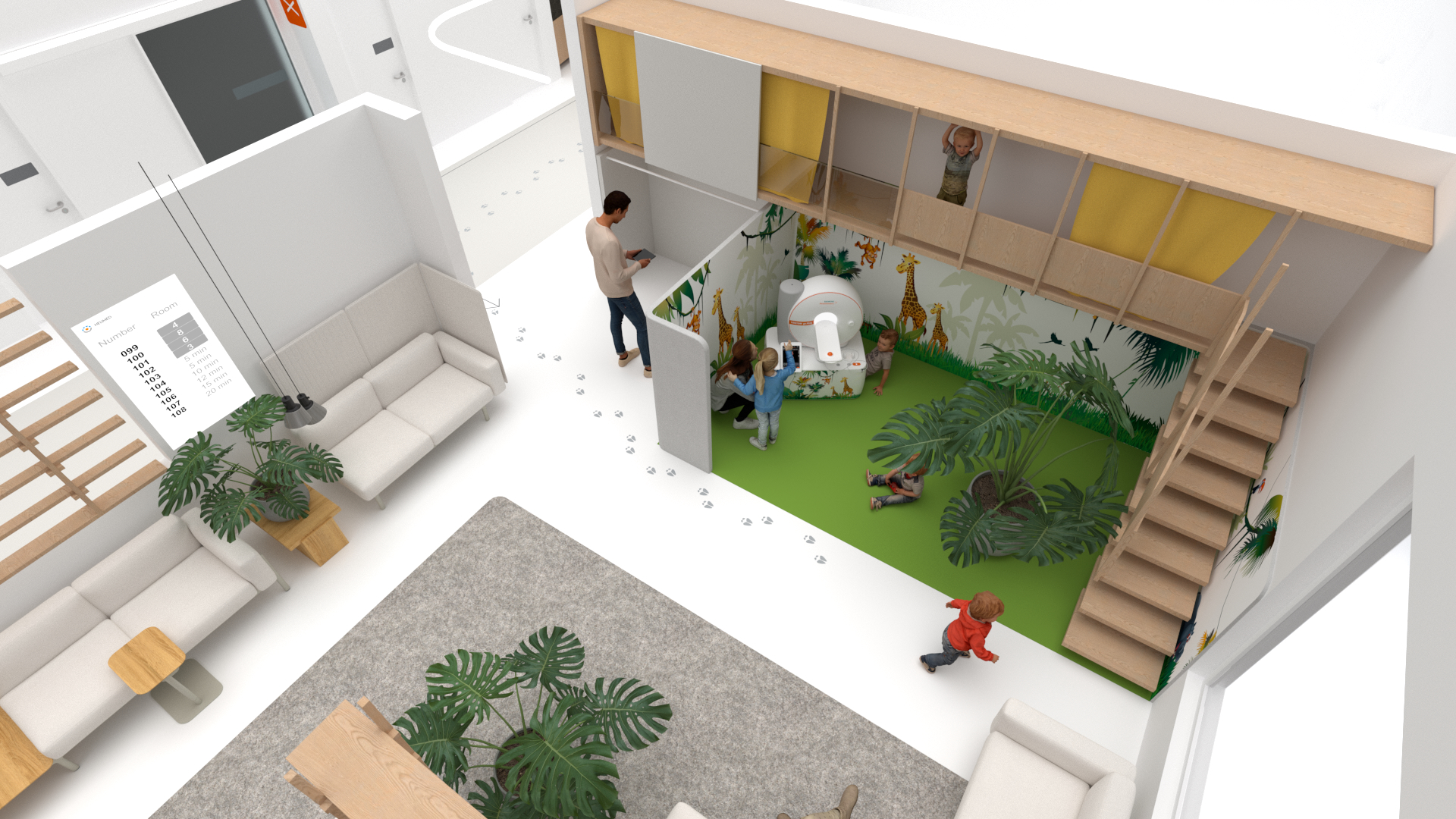

The waiting area provides children with opportunities to further engage in storytelling, explore medical devices through play, and feel more at ease in the hospital setting.
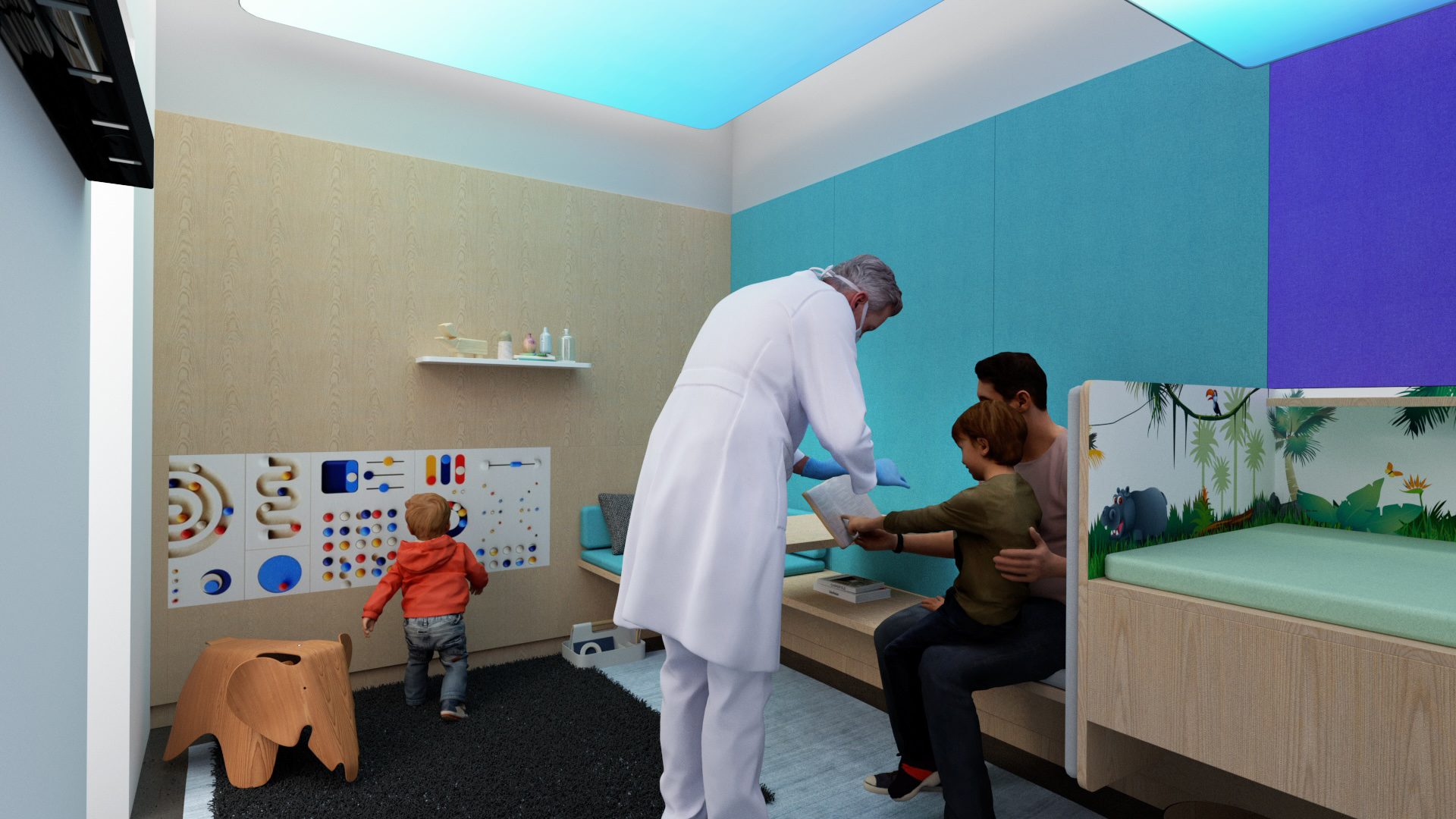
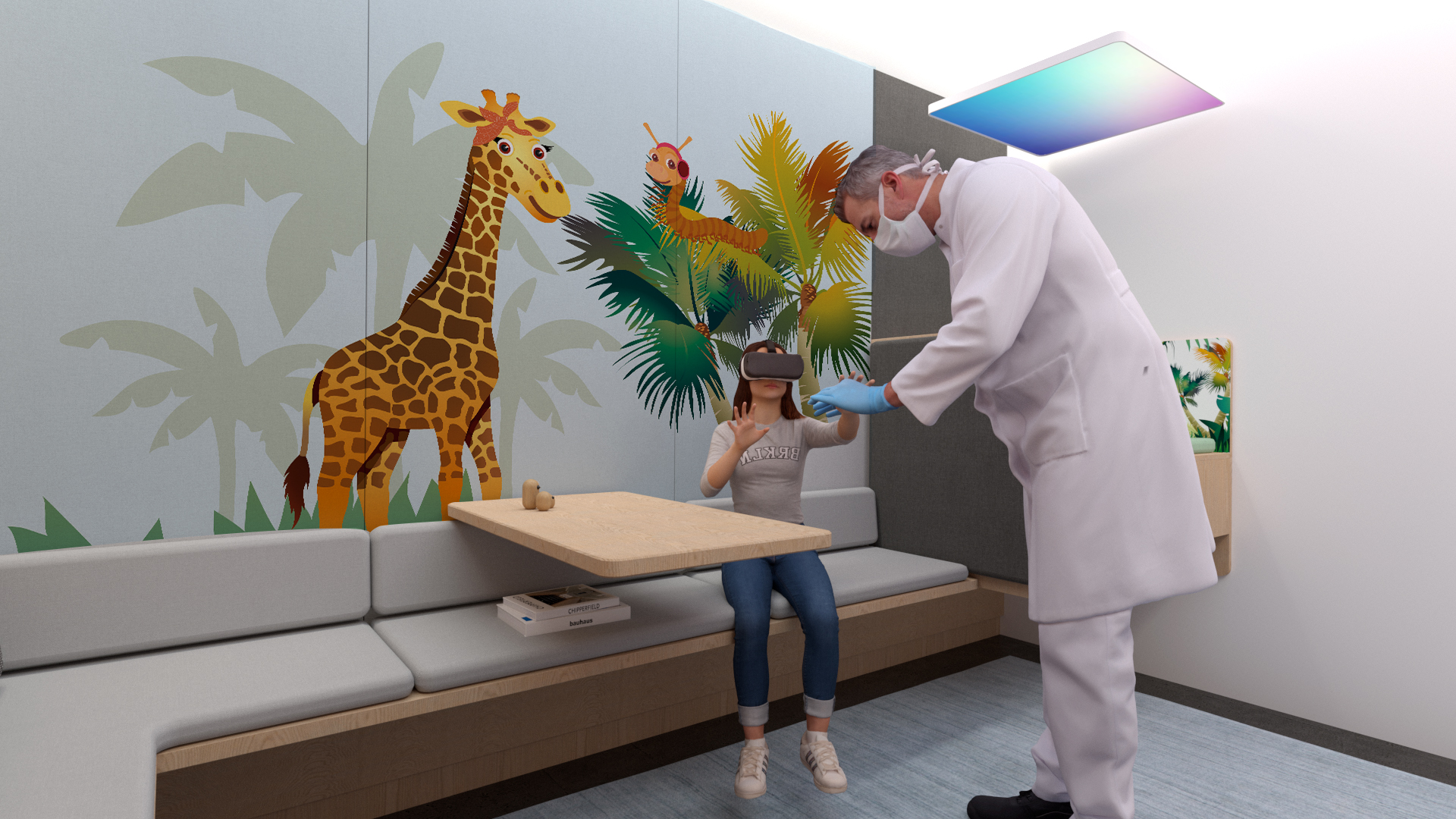
In the preparation room, children can stay with their parents and engage in interactive games. Most importantly, our specially developed VR games offer full immersion in the story, keeping children calm and distracted while doctors and medical staff perform their work efficiently.
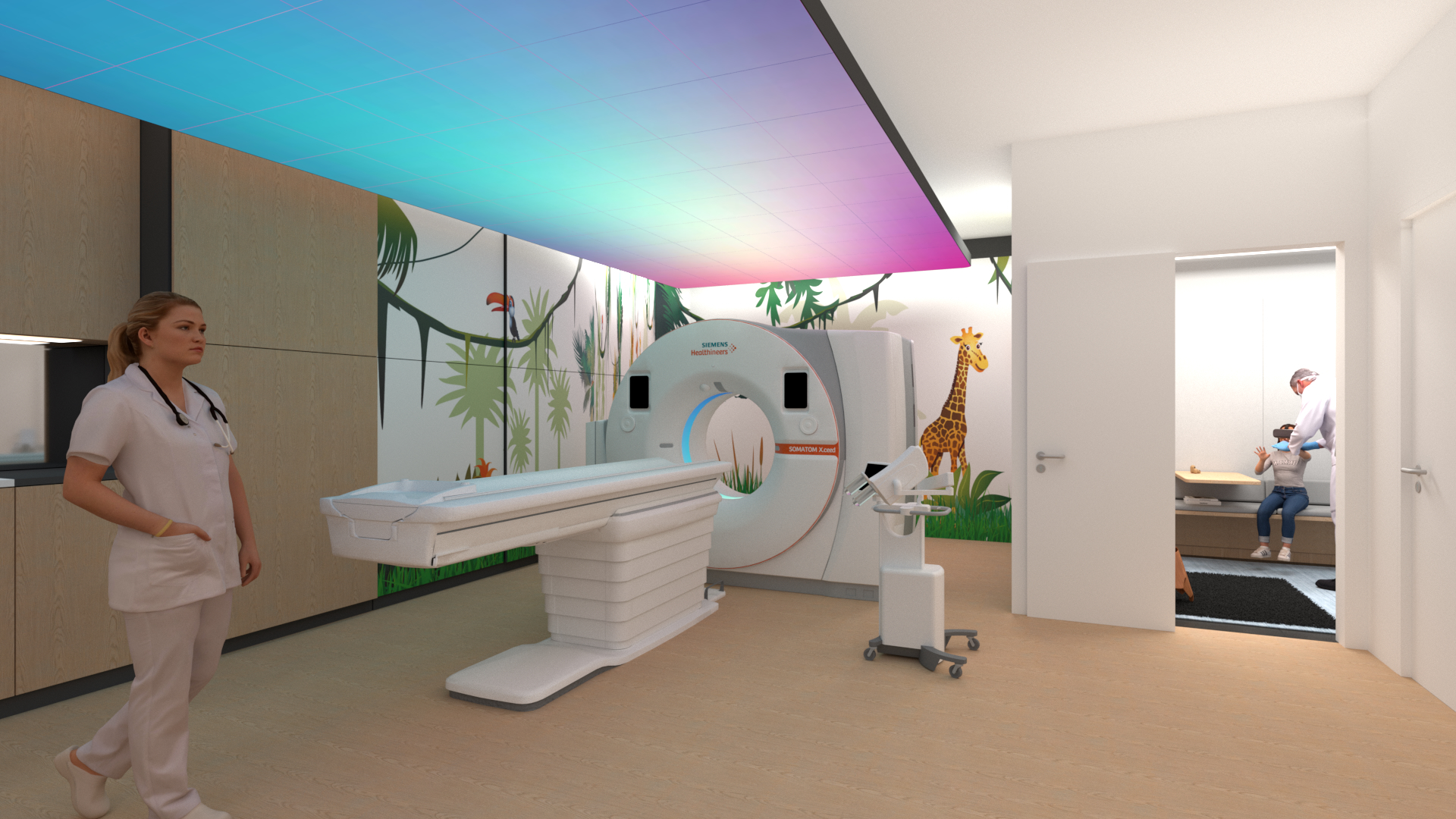
Examination rooms continue the spatial storytelling, ensuring consistency in the experience. Additionally, ceiling-mounted screens provide ongoing immersion, helping children remain engaged even while lying down.